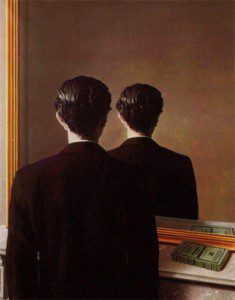 Jung described the pairing or clustering of events through meaningful coincidence as an “acausal” phenomenon. Certainly, we do not observe causation in the play of coincidence in the way that we can say the kettle boiled because we turned on the burner. A characteristic of coincidence is that it does not have a visible cause.
Jung described the pairing or clustering of events through meaningful coincidence as an “acausal” phenomenon. Certainly, we do not observe causation in the play of coincidence in the way that we can say the kettle boiled because we turned on the burner. A characteristic of coincidence is that it does not have a visible cause.
But this does not mean that there is no cause for coincidence. In our lives, meaningful coincidences often feel like they came about because of a hidden agency, or a strong intention, or a trickster or gamester at play just behind the curtain of the obvious world.
Most human cultures, across most of recorded history, have believed that there is indeed a hidden hand at work in coincidence: that it is through the play of unusual or unexpected conjunctions, and natural phenomena, that gods or angels or animate forces of nature or other dimensions send messages to humans or actively intervene in our world. It’s been said that coincidence is God’s way of remaining anonymous. Let’s not shrug this off as a “primitive” idea — it has worked, and continues to work, in highly practical ways. And let’s not classify this idea as a “metaphysical” belief.
The forces that cause meaningful coincidence may be quite physical. We miss this because we cannot observe their workings with our ordinary senses and our regular assumptions. These forces include our own thoughts and feelings, and those of others connected to us. They may include the powers that Jung called “archetypes” — as long as we remember that in Jung’s mature thought the archetypes are not structures but “habitual currents of psychic energy” and “systems of readiness for action,” and that they are as much physical as psychic. The physical forces that play with us through coincidence may include our parallel selves in parallel universes, interacting with our world in constant and complex weavings through what quantum physics has taught us to call “interference” patterns, forever shifting the balance of probabilities for any specific outcome.
Quantum physics shows us the universe as a dynamic web of connection. Subatomic particles are not separate “things”; they have meaning and identity only through their connections with everything else. Those connections do not depend on physical proximity or causation. Particles that have once been in contact with each other remain connected through all space and time.
Quantum physics also confirms that when we go to the heart of physical reality, there is no separation between mind and matter. Subatomic particles exist in all possible states until they are observed — at which point something definite emerges from the soup of possibilities.
Inner and outer, subjective and objective, interweave and move together at quantum levels, on a human scale, and no doubt everywhere in the universe. We live in an energy field where everything resonates — to a greater or lesser degree — with everything else. The world we inhabit mirrors our thoughts and feelings, and vice versa.
In the hidden order of reality, there is no distinction between mind and matter. The split between inner and outer — subjective and objective — that we experience in ordinary life is unknown in the deeper reality.
Richard Wilhelm’s account of the Chinese rainmaker contains the essence of a worldview in which the human mind and the external world form a whole. A village has been without rain for weeks. The desperate villagers send for a rainmaker. When the old man arrives, he shuts himself up in the house provided for him, performing no ceremonies until the rains come. When asked how he brought the rain, he explains that when he arrived he noted a state of disharmony in himself, so he retired to compose himself. When he restored his own equilibrium, the rain came according to its natural pattern.
As we become more awake to what is going on, we may become personal magnets for coincidence, “strange attractors” that draw more and more interesting and unexpected encounters and events toward us. The brilliant analyst and classicist Marie-Louise von Franz, who knew both Jung and Pauli well, alluded to this: “The larger our consciousness is, and the more it develops, the more we get hold of certain aspects of the spirit of the unconscious, draw it into our own subjective sphere, and then call it our own psychic activity or our own spirit.”
–
Adapted from The Three “Only” Things: Tapping the Power of Dreams, Coincidence and Imagination by Robert Moss. Published by New World Library.

